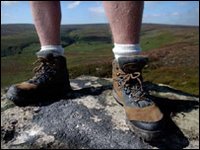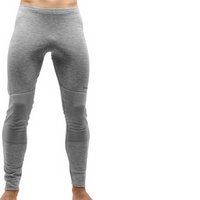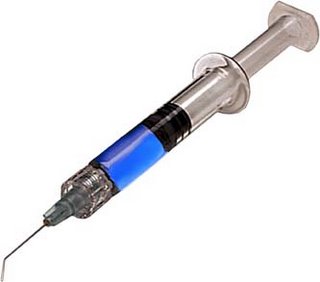
Part 2: 3 months less 2 days until departure date for our Kili adventure. See part 1 for a detailed summary of the clothing and footwear we'll need to take. This is a summary of some of the other stuff we need to think about, taken again from Explore's dossier:
 Trek kit bag: ex-army type can be obtained cheaply. Nylon or canvas bag with a zip along the top is also suitable. Whatever you choose, it must be strong and waterproof, as porters are not very gentle with baggage. Soft luggage is essential as framed rucksacks are unsuitable. The weight limit for the bag AND its contents is 15kg but you'll probably find that you don't need this much.
Trek kit bag: ex-army type can be obtained cheaply. Nylon or canvas bag with a zip along the top is also suitable. Whatever you choose, it must be strong and waterproof, as porters are not very gentle with baggage. Soft luggage is essential as framed rucksacks are unsuitable. The weight limit for the bag AND its contents is 15kg but you'll probably find that you don't need this much.
Small rucksack/day bag: during the course of a trekking day, you don't have access to the luggage that is being carried for you by the porters. In any mountain region the weather can change rapidly and you must be equipped for this eventuality. Your daysack should therefore be large enough to carry the following: waterproofs, fleece, long trekking trousers  (if walking in shorts), warm hat and gloves, sun hat, sun cream, water bottle (at least 3 litres), tissues, kitchen sink, make up and your pack lunch. Most people usually find this adds up to 3-5kg. Camera equipment can be heavy so think carefully when deciding what to take. Remember to carry spare film during the day. It is usually more comfortable to carry a slightly larger pack that is not full, than to carry a small pack that is overfull with stuff tied on the outside. Something between 25 and 35 litres capacity is probably the most suitable. A shoulder bag is not a practical alternative. Nor is a carrier bag, Steve.
(if walking in shorts), warm hat and gloves, sun hat, sun cream, water bottle (at least 3 litres), tissues, kitchen sink, make up and your pack lunch. Most people usually find this adds up to 3-5kg. Camera equipment can be heavy so think carefully when deciding what to take. Remember to carry spare film during the day. It is usually more comfortable to carry a slightly larger pack that is not full, than to carry a small pack that is overfull with stuff tied on the outside. Something between 25 and 35 litres capacity is probably the most suitable. A shoulder bag is not a practical alternative. Nor is a carrier bag, Steve.
Heavy duty plastic bags: to pack your gear in, inside your kit bag, to stay dry in case of rain. Also, it will be easier for you to sort through. Remember...the less you have to unpack in the evening the less you have to repack each morning! One of these bags to use inside your day pack is also strongly recommended.
Sleeping bag: as you don't carry it yourself, this may be down or synthetic, but it must be a 4-season comfort rating (temperature -10C to -5C). A silk or fleece liner helps to keep your bag clean and adds an extra season. (Hmm..I didn;t know there were 5 seasons but I suspect we'll learn a lot of new things on this trip).
Sleeping mat: an inflatable thermarest style mat is essential in order to help you get a good night's rest.
Sleeping aids: you may find ear plugs and an eye mask useful at night (in case the neighbours are throwing a really noisy party).
Trekking poles: strongly recommended and can usually be hired in Moshi, at US$6 per pair. Or take your own (there are loads of Poles in England at the moment).
Water bottle or platypus/Camelbak hydration system: water along the trail must never be considered as drinkable until purified. Take at least two 2-litre personal water bottles or a system that allows for this much water, perferably insulated. A personal supply of iodine tablets/drops is essential. Powdered fruit juice can be used to disguise the taste. Energy snacks, including chocolate and sweets, are also recommended whilst on trek (don't forget the chocolate hobnobs to have with our elevenses, Mrs M).
Sunglasses/snow goggles: a good pair of sunglasses/snow goggles are essential for protection against UV rays and glare at high altitudes.
Sun hat/high factor sun cream/block and lip salve: choose a high factor suncream (factor 30 or more) to protect skin against sun at high altitudes. A combination sunblock/lip salve is ideal for facial protection.
Torch/batteries/bulb: a head torch is essential for finding things at night (now then....where did I leave my inspiration?) and finding your way on summit night. Remember to bring spare batteries and bulb.
Toiletries: keep heavy cosmetics to a minimum (probably no need for blusher & mascara, ladies). Essentials are toothbrush/toothpaste, soap, small towel & small nail brush (??). "Wet wipes" are great for a quick clean up, so bring a pack of those (non-perfumed to avoid rashes).
Personal first aid kit: on each trek a first aid kit is carried but you should have your own blister kit, plaster supply, aspirins & other essentials. Please do not give medicines to local people without consulting the tour leader.

 Trek kit bag: ex-army type can be obtained cheaply. Nylon or canvas bag with a zip along the top is also suitable. Whatever you choose, it must be strong and waterproof, as porters are not very gentle with baggage. Soft luggage is essential as framed rucksacks are unsuitable. The weight limit for the bag AND its contents is 15kg but you'll probably find that you don't need this much.
Trek kit bag: ex-army type can be obtained cheaply. Nylon or canvas bag with a zip along the top is also suitable. Whatever you choose, it must be strong and waterproof, as porters are not very gentle with baggage. Soft luggage is essential as framed rucksacks are unsuitable. The weight limit for the bag AND its contents is 15kg but you'll probably find that you don't need this much.  (if walking in shorts), warm hat and gloves, sun hat, sun cream, water bottle (at least 3 litres), tissues, kitchen sink, make up and your pack lunch. Most people usually find this adds up to 3-5kg. Camera equipment can be heavy so think carefully when deciding what to take. Remember to carry spare film during the day. It is usually more comfortable to carry a slightly larger pack that is not full, than to carry a small pack that is overfull with stuff tied on the outside. Something between 25 and 35 litres capacity is probably the most suitable. A shoulder bag is not a practical alternative. Nor is a carrier bag, Steve.
(if walking in shorts), warm hat and gloves, sun hat, sun cream, water bottle (at least 3 litres), tissues, kitchen sink, make up and your pack lunch. Most people usually find this adds up to 3-5kg. Camera equipment can be heavy so think carefully when deciding what to take. Remember to carry spare film during the day. It is usually more comfortable to carry a slightly larger pack that is not full, than to carry a small pack that is overfull with stuff tied on the outside. Something between 25 and 35 litres capacity is probably the most suitable. A shoulder bag is not a practical alternative. Nor is a carrier bag, Steve. 










